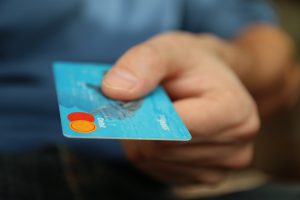Keyless smart locks, fingerprint passcodes, voice-activated control; these are just a few examples which show how far home security has come over the years.
However, while it is true that the technology has been continuously developing, the need for increased home safety – and solutions to provide it – is not anything new.
In fact, precursors of today’s smart locks can be traced back to circa 1680. One of them is now in the collection of the Victoria and Albert Museum in London.
The “smart“ detector lock was made by British locksmith John Wilkes in Birmingham, England, more than three centuries ago. However, its clever mechanics and details are likely to stump most of today’s burglars.
Read on to learn more about it.
The Smart Detector Lock Is Packed with Clever Security Features
John Wilkes’ craftsmanship and attention to details when devising the detector lock are impressive.
The lock was made of brass and engraved steel and has a cast steel key. Such a lock was most commonly fitted to the door of private closets where expensive valuables were kept.
It was also used on doors of rooms where important business meetings took place. So, the locks’ special security features were meant to mislead those who wanted to gain unwarranted access and make entry as difficult as possible.
- The image of a soldier holding a pointer is beautifully embossed on the lock cover, with the man’s front leg concealing the keyhole. The leg operates on a pivot and swings forward to reveal the keyhole on the press of a button.
- The door-bolt is released to secure the lock by tilting the man’s hat. When coupled with a turn of the knob, the same action opens the lock.
- The use of the key combined with the additional actions needed to operate the lock creates a two-factor security system; a mechanism meant to provide double protection which is still found in locks today.
- When turned inside the keyhole, the key activates both of the lock’s bolts. Fully shooting the main bolt requires a further turn.

Another aspect you may find interesting is there’s an engraved inscription on the front of the lock. The marking reads:
“If I had ye gift of tongue
I would declare and do no wrong
Who ye are ye come by stealth
To impair my Master’s wealth.”
Of course, the engraving doesn’t exactly fit the conventional sense of a security feature, but it does support the purpose of discouraging potential thieves and it’s an exciting addition nevertheless.
You can have a look at all these spectacular details in the video below:
The Lock Allowed Owners to Know if the Door Was Opened in Their Absence
Modern locks provide high-tech solutions, such as remote viewing via an app and real-time alerts, to make it possible for homeowners to keep an eye on their properties when they are away.
Homeowners who lived more than 300 years ago also wanted to know what was going on at home in their absence. Although it can’t compare to what today’s smart locks offer, Wilkes’ lock model encompasses a sophisticated feature which addresses that need, as well.
And it’s most likely the most intriguing part of the entire smart detector lock.
You see, the reason it’s called a detector lock is that it counts each time it is unlocked by rotating a disk.
The number indicated by a pointer on the numbered disk told the owners if the door had been opened in their absence (and how many times).
The numbers on the counter dial go all the way up to 100. When the dial reached 100, the main bolt can be locked – but not released.
A tiny button on the lock (strategically placed on the man’s jacket) allows the dial to be reset.
One Last Thing Before You Go
The need for home security is a defining part of modern civilisations and it’s safe to say it will continue to be so. This, of course, makes room for new devices and innovations meant to meet new challenges and make life easier.
But there’s no denying the significant role which past locksmiths, such as John Wilkers, have played in shaping the industry.
If you enjoyed learning about this smart detector lock and want to know whenever we post a new article on our blog, then make sure to follow us on Facebook and Twitter.










